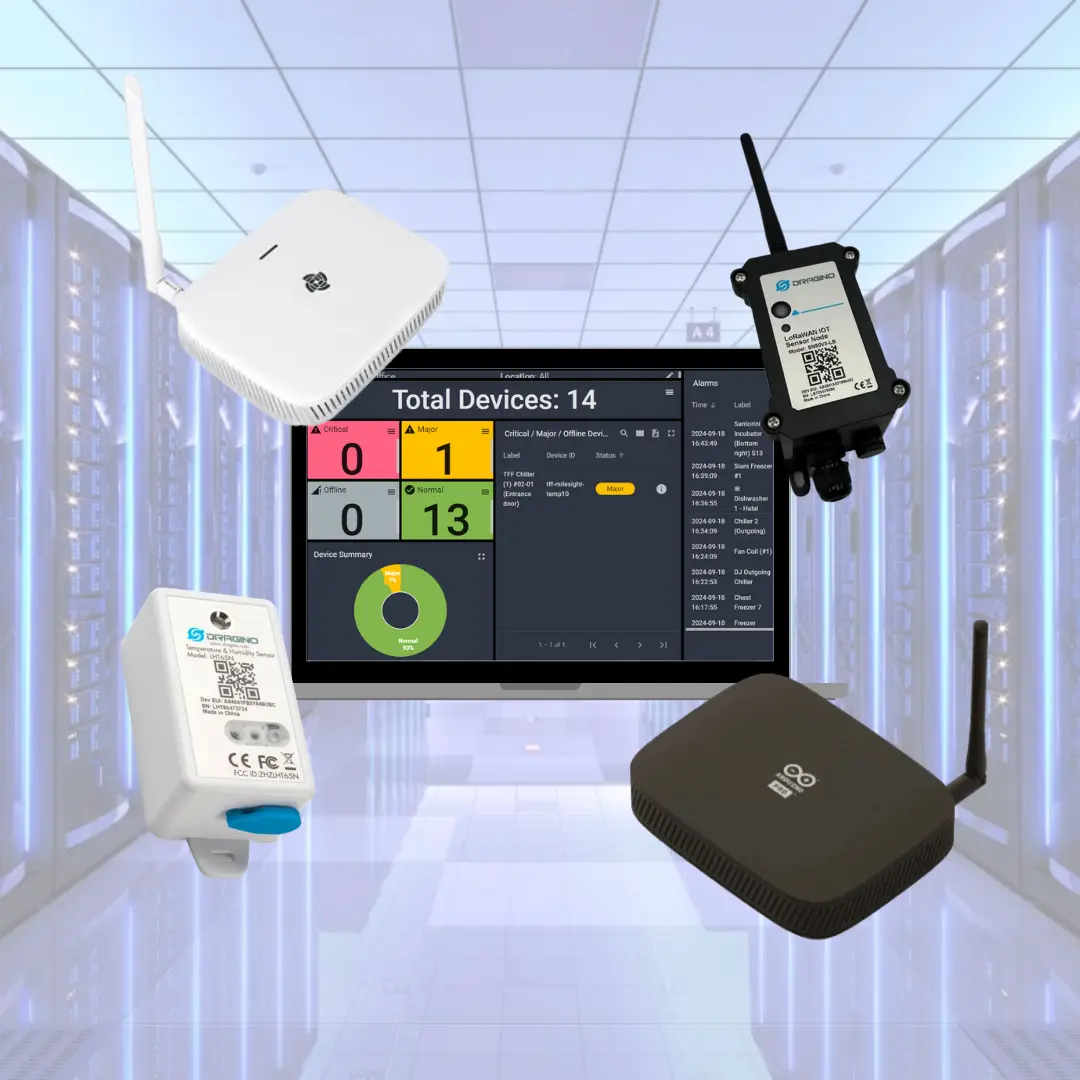Introduction: Choosing the Right Monitoring System for Your Cold Chain
When it comes to temperature monitoring in industries like pharmaceuticals, food logistics, and healthcare, choosing the right infrastructure — cloud-based vs on-premise — can impact everything from compliance and cost to scalability and risk management.
In this article, we break down the pros and cons of cloud-based vs on-premise temperature monitoring systems, helping you make an informed decision for your facility or fleet.
What Is a Cloud-Based Temperature Monitoring System?
Cloud-based systems use IoT sensors and wireless gateways to send temperature data to a remote cloud server. Data is then accessible from any internet-connected device — via web or mobile dashboard.
Example: Iotezy’s cloud platform allows real-time monitoring, alerts, and compliance reporting from anywhere, without needing local IT infrastructure.
✅ Pros of Cloud-Based Systems:
-
Remote access anytime, anywhere
-
Real-time alerts via SMS/email
-
Automated data backup
-
Easier software updates and patches
-
No need for local servers
-
Scalable across multiple locations
❌ Cons of Cloud-Based Systems:
-
Dependent on stable internet connectivity
-
May raise data sovereignty or privacy concerns for sensitive industries (unless hosted regionally)
-
Ongoing subscription or service fees
What Is an On-Premise Temperature Monitoring System?
On-premise systems store data locally — on internal servers or computers — often connected to wired or proprietary sensor systems. Access is usually limited to in-office networks or systems.
✅ Pros of On-Premise Systems:
-
Full control over data storage
-
May meet strict internal IT/security policies
-
Internet-independent in some setups
-
No recurring subscription fees (after setup)
❌ Cons of On-Premise Systems:
-
Limited remote access
-
Higher IT maintenance and overhead
-
Manual updates and patches
-
Vulnerable to hardware failure, local power outages
-
Difficult to scale across multiple sites
Head-to-Head Comparison Table

| Feature | Cloud-Based Monitoring | On-Premise Monitoring |
|---|---|---|
| Access | Anywhere (web/mobile) | On-site only |
| Installation Time | Quick (plug-and-play) | Longer (IT + server setup) |
| Maintenance | Handled by provider | Internal IT team required |
| Data Backup | Automatic + encrypted | Manual or local backups only |
| Scalability | Easy to scale across locations | Requires local setup per site |
| Compliance Reports | Real-time export from cloud | Often manual or delayed |
| Cost Structure | Subscription-based | One-time upfront + maintenance |
Real-World Example: Pharma Cold Room Monitoring
A pharmaceutical company managing vaccine cold rooms across Southeast Asia switched from a locally hosted system to cloud-based solution.
They instantly gained:
-
Centralized data view across 8 facilities
-
Instant alerts during power dips
-
Regulatory audit logs available in seconds
The on-premise system had previously required manual consolidation of data and physical access for audits — often causing delays and increased labor.
Is Cloud-Based Secure Enough?
Modern cloud platforms use:
-
AES-256 encryption in data transmission
-
SSL certificates for dashboard access
-
Region-specific hosting (e.g., AWS Singapore for PDPA compliance)
-
Two-factor authentication (2FA) for admin logins
This often surpasses the cybersecurity standards maintained in small to mid-sized local IT setups.
So Which Should You Choose?
Choose Cloud-Based If:
-
You manage multiple locations
-
Need real-time access and alerts
-
Want hands-off maintenance and scalability
-
Plan to automate audit compliance
Choose On-Premise If:
-
You have internal IT teams and strict data control policies
-
Operate in offline or low-connectivity environments
-
Are in high-security government or defense sectors
Final Thoughts
There’s no one-size-fits-all answer — but for most cold chain operators today, cloud-based temperature monitoring offers faster deployment, better remote visibility, and lower IT burden.
It supports modern compliance needs and is often more resilient against data loss, human error, and system failures.
Other Blogs
Food Storage
Medical Storage
IT Equipment
Server room temperature & humidity monitoring
Interested to digitalize your monitoring operations?
Speak with us to explore transiting from manual to automated monitoring.


